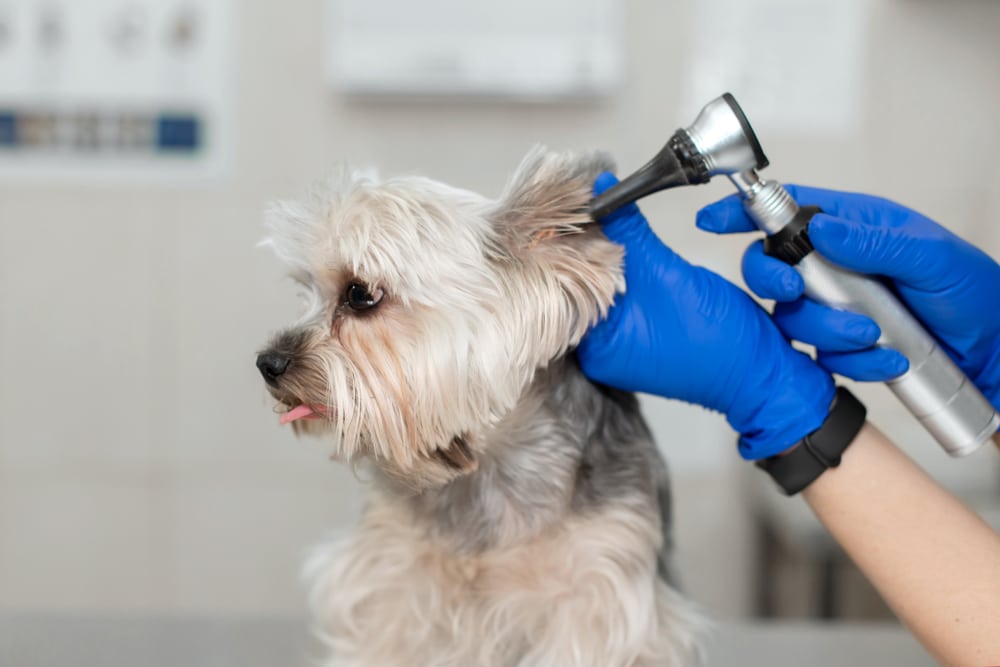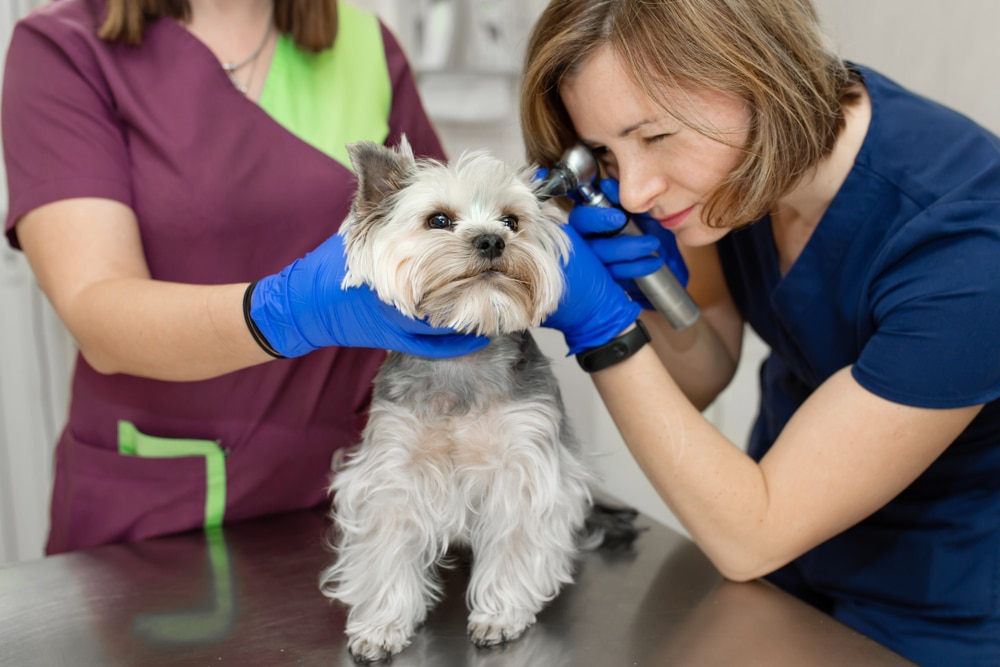Deaf dogs can be as loving and intelligent as any other pet, but they need a different approach to training and managing behavior. Taking care of a deaf dog is a unique challenge that requires special consideration. So, what’s the best way to care for a deaf dog?
Caring for a deaf dog requires patience, understanding, and a willingness to adapt to new training methods with proper daily care. Understanding deaf dog behavior and communication, utilizing positive reinforcement and visual cues, ensuring safety precautions, and providing daily exercise and mealtime routines are essential to ensuring the well-being and happiness of a deaf dog.
Table of Contents
Do Deaf Dogs Need More Attention?
Deaf dogs can provide unique companionship and love, but they also require extra attention and care. All dogs need daily exercise, stimulation, affection, and nutrition to stay healthy, but deaf dogs are particularly vulnerable because their lack of hearing presents additional challenges.
It is important to ensure that your home is a safe space for your deaf dog. Without the ability to hear warnings or commands, you must be extra vigilant about keeping small items or dangerous objects out of reach.
Understanding Deaf Dog Behavior

Before discussing how to best care for your deaf dog, it is important to understand their behavior and communication. Here are a few tips.
Communication With A Deaf Dog
Communicating with a deaf dog can require extra effort and patience, but it is certainly possible and can lead to a solid and loving bond between the owner and the dog.
Hand signals are the most common method of communicating with a deaf dog. These signals can include pointing, waving, or holding up a treat to indicate commands such as, “Come,” “Sit,” or, “Stay.”
Deaf dogs are very observant and can pick up on visual cues from their environment too. This can include using light or shadow to get their attention or to convey a message.
It’s essential to be patient and consistent when communicating with a deaf dog as well. With time and practice, the owner and the dog will become more skilled at communicating effectively.
Understanding Body Language
Body language is a critical part of communicating with dogs, and this is especially true for deaf dogs, who rely heavily on visual cues.
A wagging tail is usually a sign of a happy and relaxed dog, but the direction and speed of the tail wag can also indicate different emotions. For example, a slow wag with a tail held low can indicate fear, while a fast wag with a tail held high can indicate excitement.
A dog’s ear position can also indicate its emotional state. Ears that are perked up and forward can indicate excitement or alertness, while ears that are flat against the head can indicate fear or aggression.
Dealing With Fear And Anxiety
Fear and anxiety can still be present in deaf dogs, even though they do not hear the source of their fear. However, how fear and anxiety manifest in deaf dogs may differ from hearing dogs. Sudden movements or changes in light can be more frightening to a deaf dog.
Deaf dogs can still feel vibrations and touch, so they may be more sensitive to physical sensations that cause fear or anxiety. For example, they may be more sensitive to changes in the ground under their feet or being bumped or touched unexpectedly.
Training A Deaf Dog
Training a deaf dog can be different from teaching a hearing dog, but it is definitely possible.
Positive Reinforcement
Positive reinforcement is a great way to train a deaf dog. Give your dog treats or praise when they respond correctly to your hand signals. This is a widely used and effective training method for deaf dogs and other animals, as well as for humans.
It is based on the principles of operant conditioning, which states that behavior can be shaped and changed through the consequences that follow it.
Visual Cues
Since a deaf dog can’t hear verbal praise, it’s important to use visual cues to indicate when they’ve done something right. A thumbs up, a smile, or a nod can all serve as a visual signal of approval.
Choose gestures that come naturally to you, such as pointing or waving, rather than trying to invent new gestures. This will make it easier to consistently use the same signals over time.
Sign Language
Sign language can be a useful tool for communicating with a deaf dog. Many people use American Sign Language (ASL) or other signed languages to communicate with their dogs, and there are also specific sign languages explicitly used for dogs.
Using sign language with a deaf dog has several advantages. First, it allows you to communicate with your dog without relying on vocal commands, which is important for a deaf dog. Second, it can help you build a strong bond with your dog, as you can communicate in a unique way that is just for the two of you.
Consistency In Training
Consistency is a critical factor in successful dog training. When training a dog, you must be consistent in the commands, cues, and reinforcement you use.
This will help your dog understand what is expected of it and will make the training process more effective.
Protecting A Deaf Dog From Potential Hazards
Here are some tips for protecting a deaf dog.
Keep Them On A Leash
When walking a deaf dog, it is important to keep it on a leash at all times. This will prevent it from wandering into dangerous situations, such as roads or areas with hazardous chemicals or materials.
Use Visual Cues
Use visual cues to alert the dog to potential hazards, such as pointing to an object or waving your arms. This will help the dog understand there is danger nearby.
Train To Come To You
Train your dog to come to you when you call it, using hand signals or visual cues. This will make it easier to retrieve the dog if it does wander into a dangerous situation.
Supervise Them Closely
When the dog is in new or unfamiliar environments, supervise it closely to ensure it does not get into any hazardous situations.
Make Changes To The Environment
Make changes to the background to make it safer for the deaf dog. For example, put up fences or gates to prevent it from wandering into dangerous areas or remove hazards like sharp objects or chemicals from the dog’s reach.
Use A Vibrating Collar
A vibrating collar can be a helpful tool for alerting a deaf dog to potential hazards. The collar will vibrate when you press a button, and the dog will associate the vibration with danger and come.
In Conclusion: How To Take Care of A Deaf Dog
To care for a deaf pup, one must be patient, understanding, and open to new methods of training. Communication is key and can be done through hand signals, visual cues, sign language, and positive reinforcement. Consistency in training, as well as keeping the pup safe from potential harm, is necessary for its happiness and well-being. With the right care, deaf dogs will bring joy to their owners and build an incomparable bond.
So, are you considering adopting a deaf dog? Let us know in the comments below!
